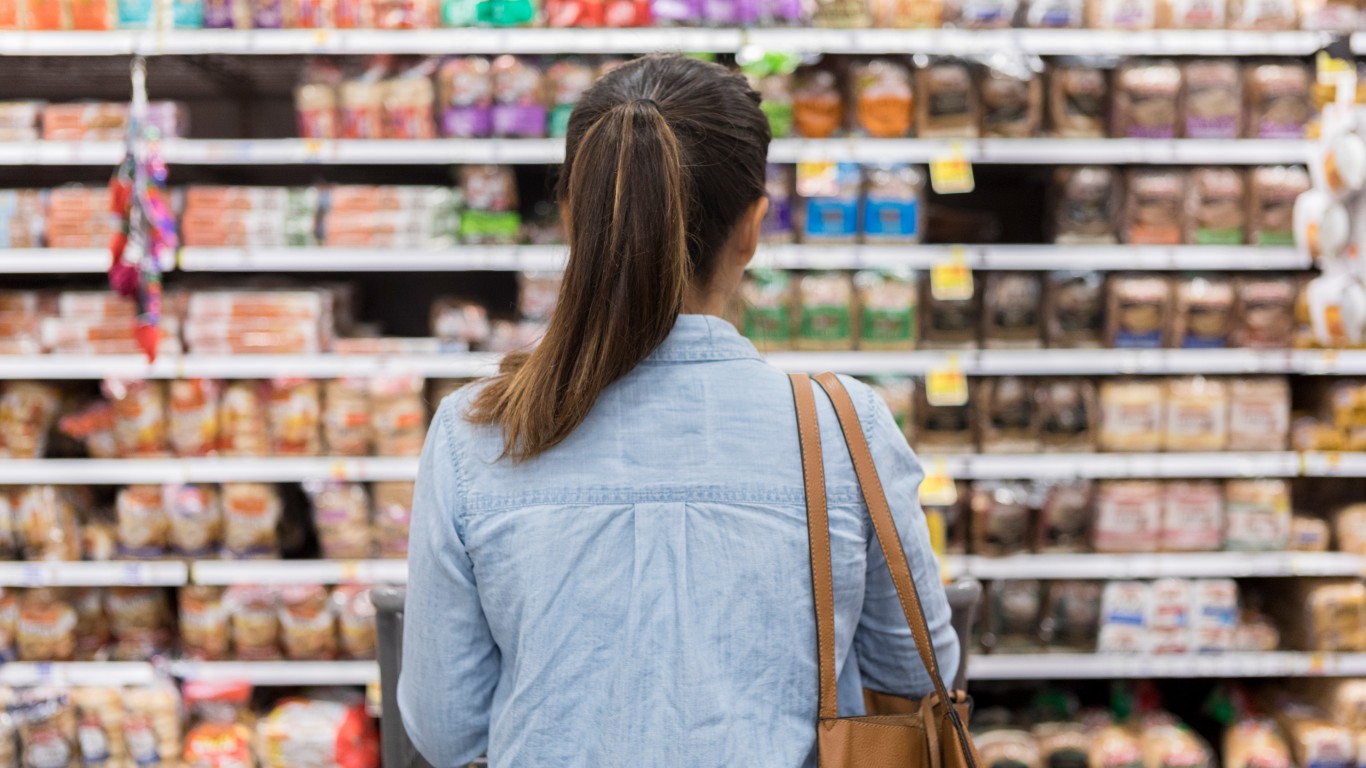Companies and Brands
Can B&G Foods Be Seen as Value, Growth Opportunities and Overbought All at Once?

Published:
Last Updated:

B&G Foods Inc. (NYSE: BGS) should have been covered much more in-depth during the period that the novel coronavirus turned into the COVID-19 pandemic and instant recession. As stocks sold off at the end of February and entered panic mode in March, B&G foods went from $17.50 at the start of 2020 down to a low close of $11.30. That only lasted a day at the extreme lows, but the stock is now up 125% or so since that time.
24/7 Wall St. is reviewing B&G Foods as a candidate that some investors will say is now grossly overvalued, versus another view that B&G still offers an incredible value for the long term. B&G is not without controversy either, evidenced back to its 2016 brief peak above $50.
B&G has flown under the radar as a defensive stock and as a value stock because its market cap currently is only about $1.6 billion. Many investors do not even know the company, but they do know its top brands: Cream of Wheat, Mrs. Dash, Ortega, Green Giant, Regina, Emeril’s, Weber, Polaner, Skinny Girl, New York Flatbreads, SnackWell’s and more.
Despite having plenty of room for growth, B&G Foods has seen a peaking trend in revenues ahead of the hoarding and mass buying around the COVID-19 pandemic. This could even fit within America’s top comfort foods in some ways. Ditto for foods with the longest shelf life.
Sales of $1.66 billion in 2019 compared with $1.70 billion in 2018 and $1.67 billion in 2017. Still, sales were just $1.39 billion back in 2016. The company also has about $2 billion in long-term debt and capital lease obligations.
Investors know that there has been a great amount of consolidation in the food business. Selling prepackaged and prepared foods can be a bit tricky when millennials might be more focused on organic and natural foods. B&G can tap some of that market, and the first quarter of 2021 did see close to 9% total revenue growth from the first quarter of 2019 due to the pandemic buying frenzy witnessed in the stores.
As for B&G’s valuation, even after its shares have more than doubled since March’s lows, the earnings per share of $1.64 in 2019 and normalized earnings expectations of about $2.00 per share in 2020 and 2021 just doesn’t sound crazy for less than a $25 stock. Most investors tend to not think that roughly 12 times earnings is crazy. Overall revenues are projected by Refinitiv to rise over 10% in 2020 but then contract by about 5% in 2021. What if the company manages to parlay its last quarterly report of beating expectations into a trend?
One issue that does cause havoc is tracking the short sellers. On last look, those sellers had amassed a 16.17 million share short interest in B&G Foods. That’s just over 25% of its float. When stocks are heavily shorted, they are often treated differently than companies with only 3% or 4% of their float shorted. That said, the exchange-traded funds and other funds under BlackRock, Vanguard and State Street own more than 30% of the outstanding shares in B&G Foods.
Had this stock had a larger market capitalization, it almost certainly would have been among our 40 stocks thriving during the COVID-19 recession.
The analyst community is not all that active in this stock, perhaps due to its smaller size. Credit Suisse had a $17 target in place from August of last year through the end of April in 2020, but the firm then raised its target to $19 and again to $22 in mid-May, despite the current Neutral rating. Also in mid-May, Piper Sandler upgraded its rating to Overweight from Neutral and raised its target to $28 from $21.
Deciding whether this is cheap based on its multiples or is overbought because its stock has doubled in such a short period is no easy task. Wall Street is mixed for the few analysts covering it, and short sellers are all over it.
This may be one time when long-term investors want to be patient and see if pullbacks bring new opportunities.
Retirement planning doesn’t have to feel overwhelming. The key is finding expert guidance—and SmartAsset’s simple quiz makes it easier than ever for you to connect with a vetted financial advisor.
Here’s how it works:
Why wait? Start building the retirement you’ve always dreamed of. Click here to get started today!
Thank you for reading! Have some feedback for us?
Contact the 24/7 Wall St. editorial team.